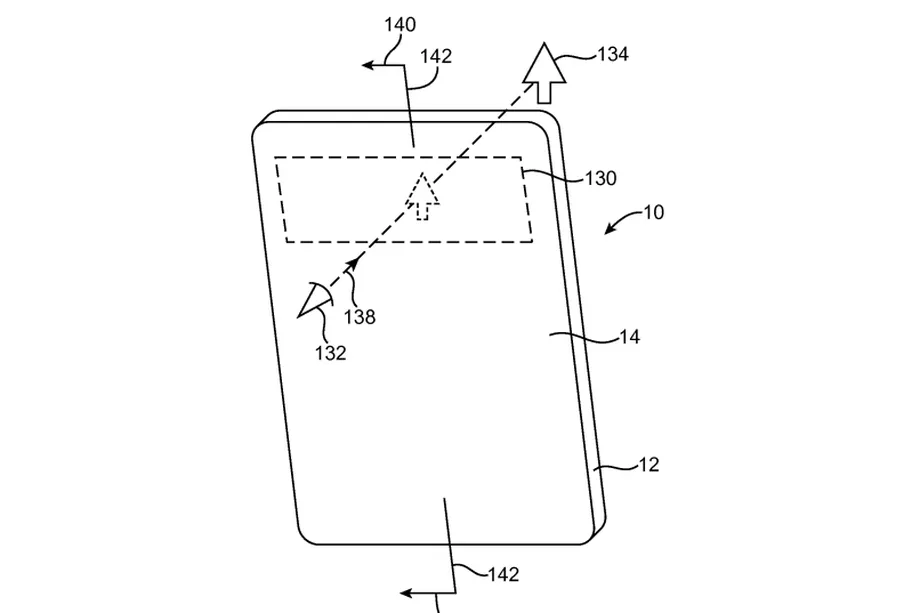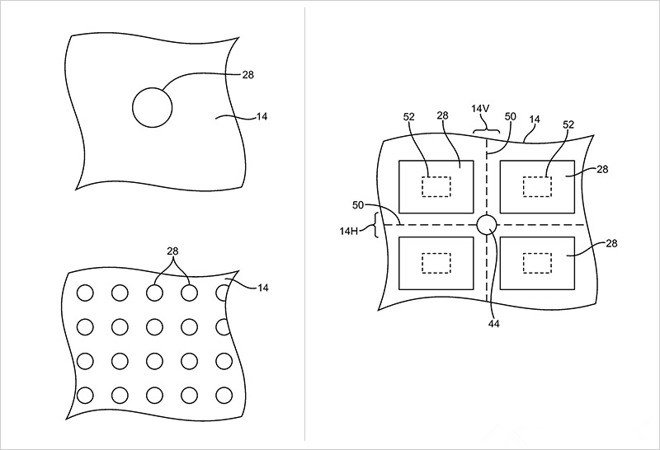 4814
4814
 2017-01-11
2017-01-11
Apple on Tuesday was granted a patent detailing technology that allows for ear speakers, cameras and even a heads-up display to hide behind an edge-to-edge screen, a design rumored to debut in a next-generation iPhone later this year.
Awarded by the U.S. Patent and Trademark Office, Apple's U.S. Patent No. 9,543,364 for "Electronic devices having displays with openings" describes a method by which various components can be mounted behind perforations in a device screen that are so small as to be imperceptible to the human eye. This arrangement would allow engineers to design a smartphone or tablet with a true edge-to-edge, or "full face," display.
Until recently, smartphone aesthetics have been both defined and limited by their most dominant feature: the display. Conventional candybar designs made popular by iPhone put the screen front and center, with supporting hardware arranged along its periphery.

According to the document, openings are formed between pixels, suggesting a self-illuminating display technology like OLED is preferred over traditional LCD structures that require backlight and filter layers. Hole groupings can be arranged in various shapes depending on the application, and might be larger or smaller than the underlying component. For example, an opening for a camera might be circular and only as large as the objective lens, while the sensor module is an order of magnitude larger.
If implemented into a future iPhone, the window-based HUD could be Apple's first foray into augmented reality. Apple leaves the mechanics unmentioned, but the system could theoretically go beyond AR and into mixed reality applications.

For example, a rear-facing camera might gather scene information, which is then processed using local or cloud-based computer vision algorithms, similar to those employed by iPhone 7 Plus' Portrait mode. A digital image containing useful information about a user's surroundings might then be projected —in alignment with real-world objects —onto the sub-display window.
Apple's patent for a device with display openings was first filed for in February 2015 and credits Benjamin M. Rappoport, Jeremy C. Franklin, Fletcher R. Rothkopf, Scott A. Myers, Richard P. Howarth, Julian Hoenig, Christopher J. Stringer, John P. Ternus and Stephen Brian Lynch as its inventors.
Source: appleinsider